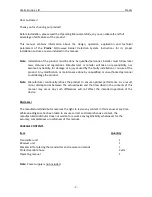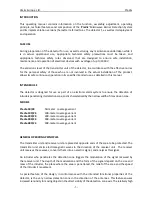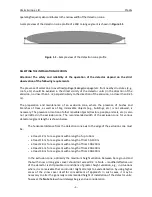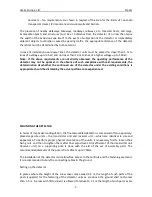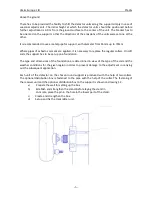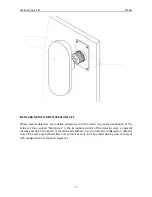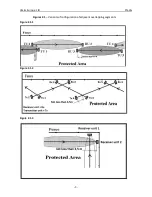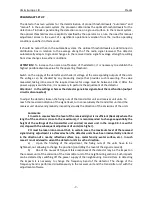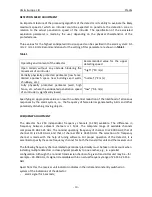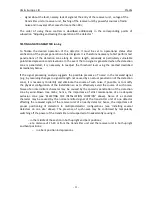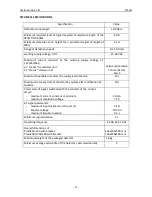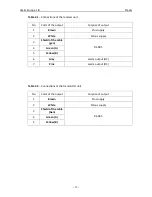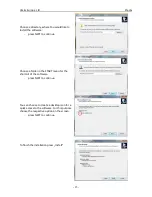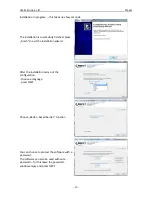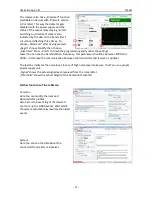
Umirs Europe Ltd. Predix
- 11 -
-
signal about the fault, namely: lack of signal at the entry of the receiver unit , outage of the
transmitter unit or receiver unit , flashing of the receiver unit by powerful sources of radio
noise and in several other cases for more than 30 s;
The order of using these controls is described additionally in the corresponding points of
subsection “Adjusting and testing the operation of the detector”.
TESTING AND TRANSMITTER tuning
To finalize the desired operation of the detector, it must be set to operational status after
verification of the proper generation of alarm signals. It is therefore necessary to first perform test
penetrations of the detection zone along its entire length, especially at particularly vulnerable
points like depressions and elevations. In the event that no signal is generated when the detection
zone is penetrated, it is necessary to readjust the threshold level using the method described
immediately below.
If the signal processing analysis suggests the possible presence of ‘noise’ in the received signal
(e.g., by recording changes in signal strength not caused by an actual penetration of the detection
zone), it is necessary to identify and eliminate the source of such noise, if possible, or to modify
the physical configuration of the installation so as to effectively avoid the source of such noise.
Noise of an intermittent character may be caused by the sporadic penetration of the detection
zone by wind-blown tree limbs; hence, the importance of strict maintenance of an adequate
exclusion zone (see ‘SELECTING THE INSTALLATION LOCATION’ above). Noise of a constant
character may be caused by the normal emitted signal of the transmitter unit of one detector
affecting the received signal of the receiver unit of a nearby detector; hence, the importance of
proper positioning of detectors in multiple-detector configurations (see ‘Installing several
detectors on one site’ above). The presence of such noise may be confirmed by temporarily
switching off the power of the transmitter unit suspected of inadvertantly causing it.
─
in the middle of the section in both upright and bent positions;
─
at a distance of 15-20 m from the transmitter unit and the receiver unit in both upright
and bent positions;
─
in a bent position in depressions.


